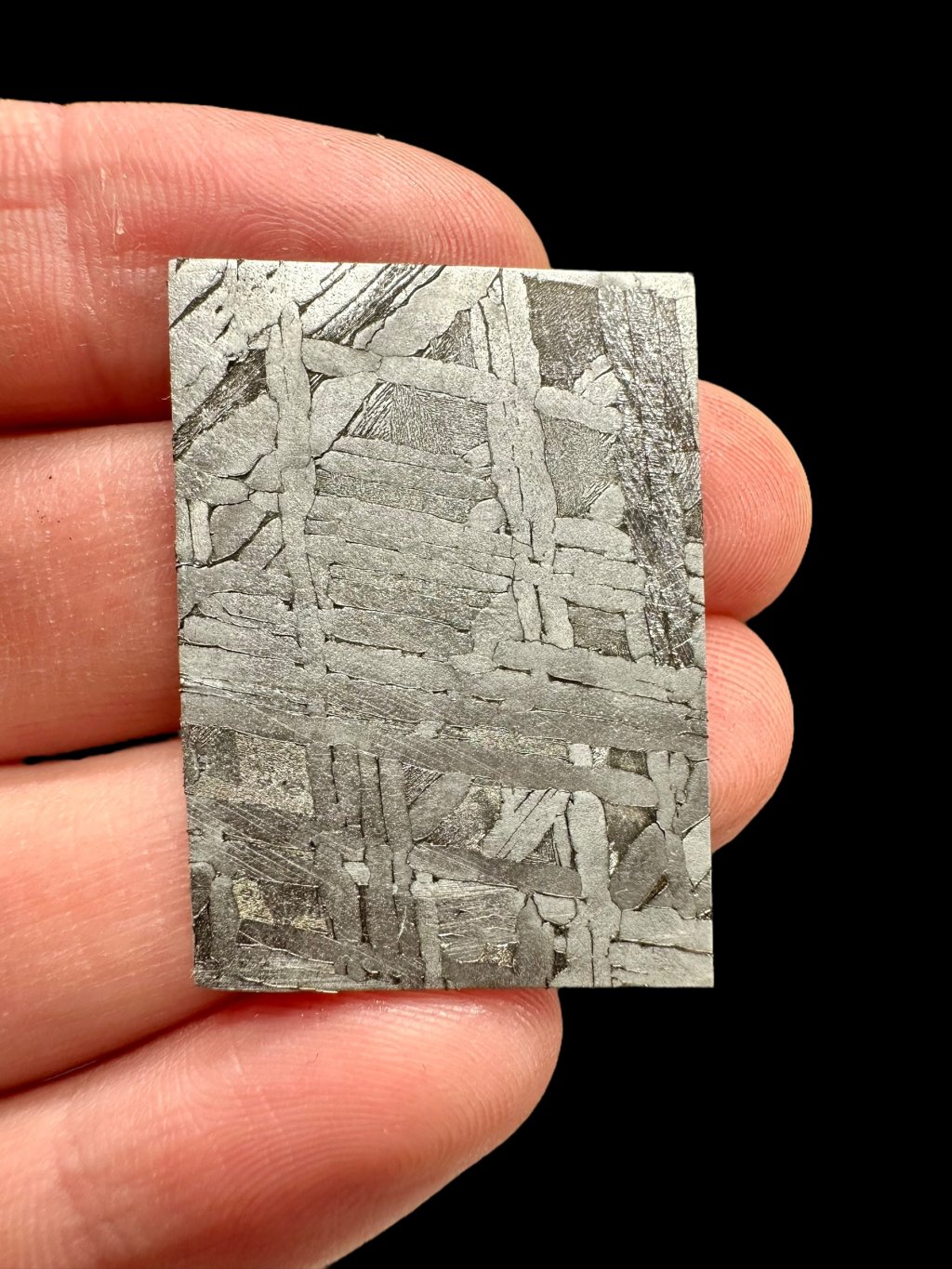Meteorite Toluca 8,9g – Mexico
Typ: iron / IAB-sLL
Locality: Mexico
Weight: 8,9g
Dimensions: 33 x 24 x 1 mm
Year of found: 1776
Total known weight: 3 tonnes
Surface treatment: cut, polished slice; treated with oil
Toluca Meteorite – iron octahedrite from Mexico
Toluca is an iron meteorite that belongs to the group of octahedrites, specifically to the chemical group IAB, and falls into the sLL subgroup (subgroup Low-Au, Low-Ni), which means it contains lower amounts of gold and nickel compared to other IAB meteorites. Nevertheless, it retains a sufficiently high content of iron and other metals to give it a distinct metallic silver color. When etched and polished, it reveals so-called Widmanstätten patterns, which are typical crystalline structures that form during the very slow cooling of metal in space. Due to its high iron content, it is very heavy, so even a relatively small fragment can have a surprisingly large mass. In addition to iron and nickel, it also contains smaller amounts of other minerals such as graphite or troilite, which sometimes form small inclusions in the material.
Discovery and historical use
The meteorite was found in the Toluca Valley in central Mexico, from which it also takes its name. The local inhabitants were aware of the iron pieces long before the arrival of Europeans and used them, for example, for tool making. The first European reference to the meteorite dates from 1776. Smaller fragments can still be found in the area, as the original body shattered into many pieces during its atmospheric entry.
Origin and age
Like most iron meteorites, Toluca probably originates from the period of solar system formation, approximately 4.5 billion years ago. At that time, a number of smaller proto-planetary bodies, known as planetesimals, moved through interplanetary space, which ultimately did not become full-fledged planets. These bodies often had metallic cores, which formed by the separation of denser elements—mainly iron and nickel—into the central region.





